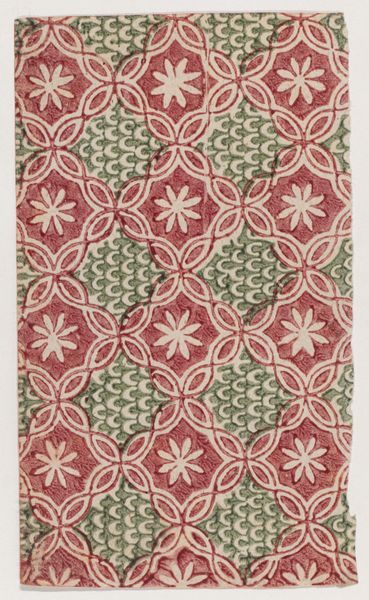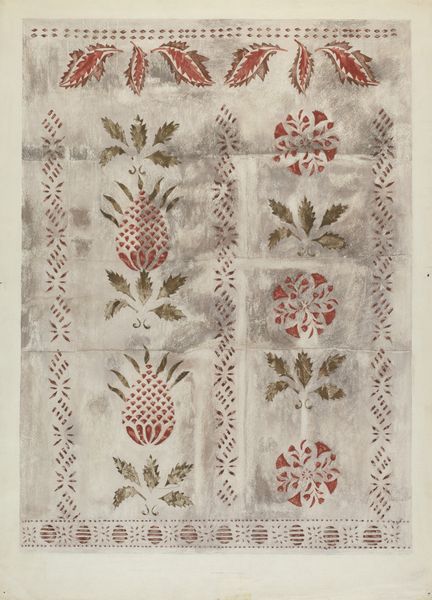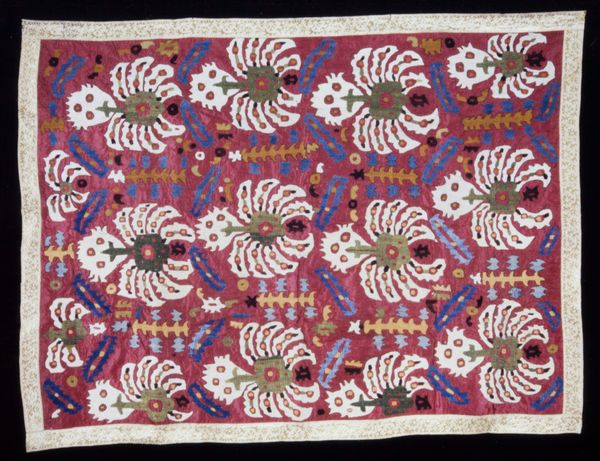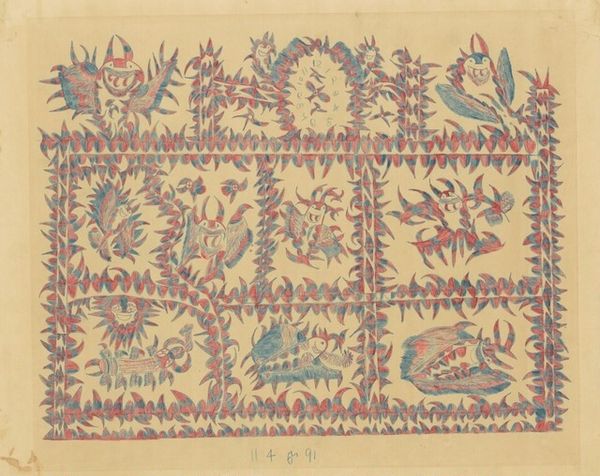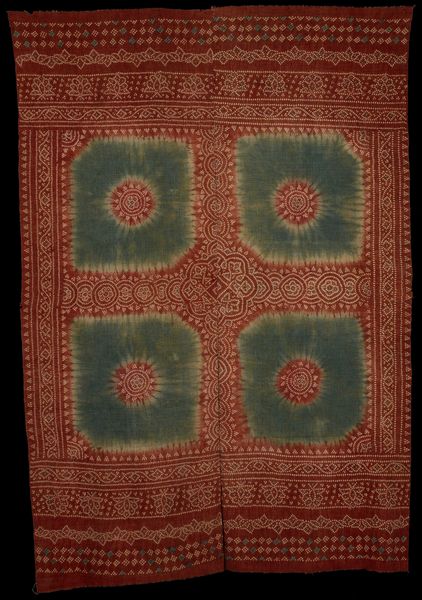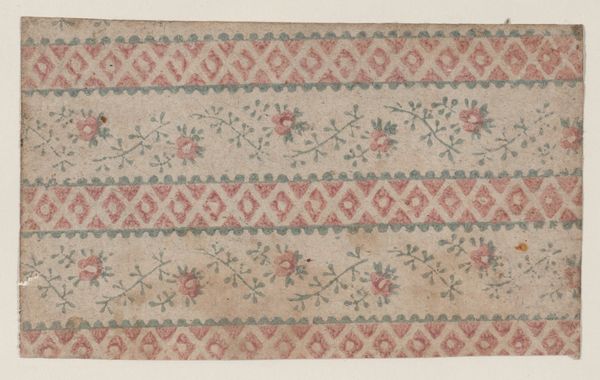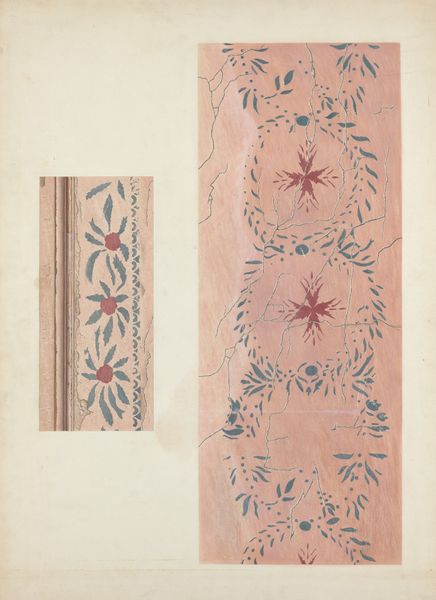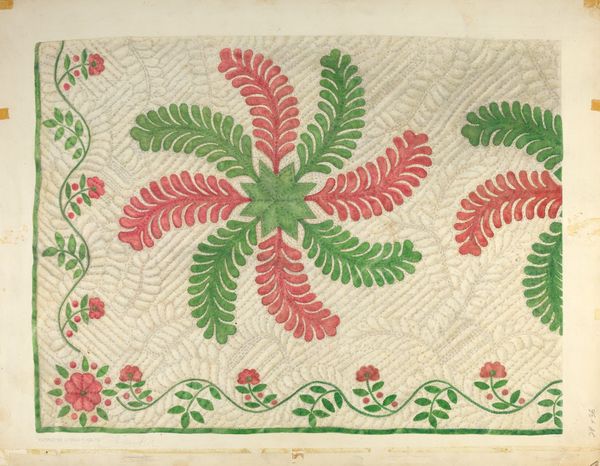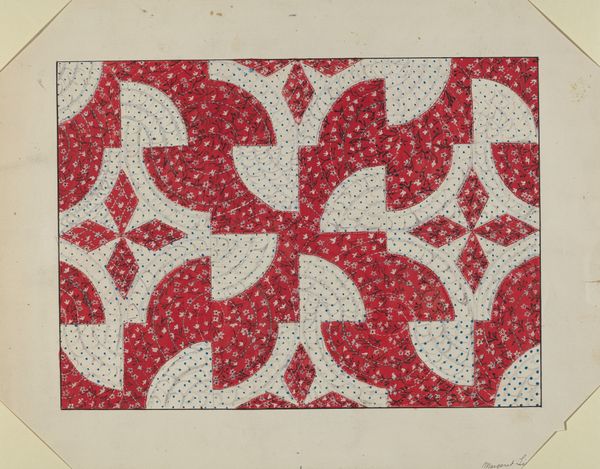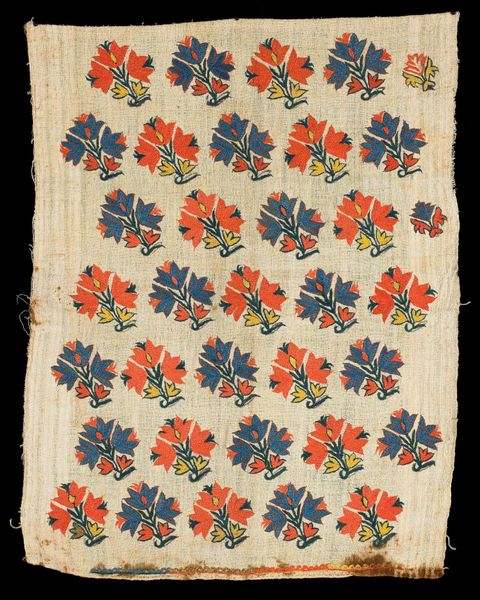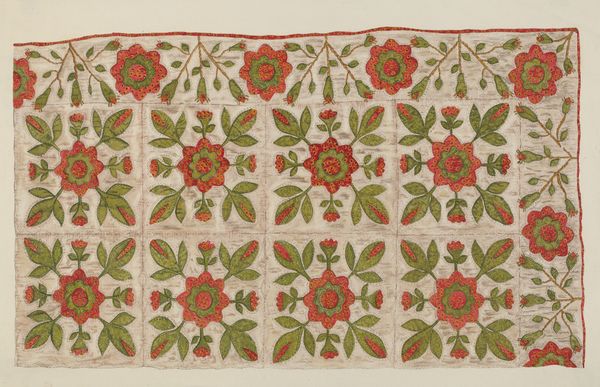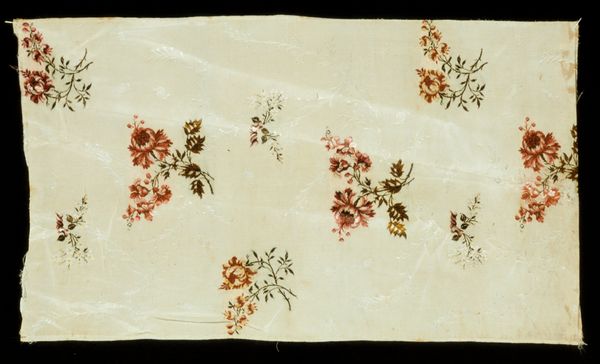
fibre-art, weaving, textile, cotton
#
fibre-art
#
weaving
#
textile
#
cotton
Dimensions: 32 1/4 x 18 13/16 in. (81.92 x 47.78 cm)
Copyright: Public Domain
Curator: What strikes me immediately is the density of the stitching; it creates such a tactile presence. Editor: Indeed. We're looking at a Kantha Cloth, sometimes referred to as a Nakshi Kantha. It’s believed to be from around the 20th century. Kantha, traditionally from Bangladesh and West Bengal, involves repurposing old cloth through layers of running stitches. This particular example is in the collection of the Minneapolis Institute of Art. Curator: Repurposing, yes. Think of the worn saris, the discarded dhotis that comprise this very piece, transformed from humble materials to a textile alive with pattern and purpose. How do we unpack this complex relationship between labor and artistry? Editor: Precisely. These textiles weren't produced in isolation. They were very often communal activities. The patterns and motifs woven, stitched into the cloth tell stories— personal narratives interwoven with social commentary. Did it mark a birth, a marriage, or was it created for daily use or ceremonial purpose? The cloth and motifs are rich in political implications as they empower the woman in textile-making industry. Curator: And what of those striking floral and foliate forms? The stars, the possible fish motifs… They seem almost graphic, considering the labor intensive process involved. What meaning could these elements have held to the maker or recipient? Editor: That's where things get fascinating. Interpretations of the symbolism vary, which adds another layer of complexity when understanding it. The flowers may speak to prosperity or beauty, while animals frequently embody local folklore and beliefs. Considering the role museums like the Minneapolis Institute play in showcasing such domestic artistry, it urges us to question the western canon and its marginalization of textiles. Curator: The scale is hard to get a sense of just looking at this. What was this textile likely intended for? Editor: Probably a wrap, blanket or spread for the bed, a practical but beautiful creation. The wear tells of daily living within domestic spaces. Curator: Examining it, I’m reminded how much history and ingenuity are literally woven into a simple material. Editor: I agree. Pieces like these demand a rethinking of art history— urging us to consider everyday objects.
Comments
No comments
Be the first to comment and join the conversation on the ultimate creative platform.
